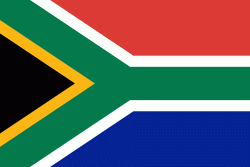South African National Museum of Military History (South African National Museum of Military History)
The South African National War Museum in Johannesburg was officially opened by Prime Minister Jan Smuts on 29 August 1947 to preserve the history of South Africa's involvement in the Second World War. In 1975, the museum was renamed the South African National Museum of Military History and its function changed to include all conflicts that South Africa has been involved in. In 1999 it was amalgamated with the Pretoria-based Transvaal Museum and National Cultural History Museum to form the NFI. In April 2010 Ditsong was officially renamed Ditsong Museums of South Africa and the SANMMH was renamed the Ditsong National Museum of Military History.
In the grounds of the museum is a large memorial designed by Sir Edwin Lutyens.
On 30 November 1910 Prince Arthur, Duke of Connaught and Strathearn laid a commemorative stone at the memorial.
Originally called the Rand Regiments Memorial and dedicated to British soldiers that lost their lives during the Second Boer War, it was rededicated on 10 October 1999 to all people who died during the Second Boer War and renamed the Boer War Memorial.
In the grounds of the museum is a large memorial designed by Sir Edwin Lutyens.
On 30 November 1910 Prince Arthur, Duke of Connaught and Strathearn laid a commemorative stone at the memorial.
Originally called the Rand Regiments Memorial and dedicated to British soldiers that lost their lives during the Second Boer War, it was rededicated on 10 October 1999 to all people who died during the Second Boer War and renamed the Boer War Memorial.
Map - South African National Museum of Military History (South African National Museum of Military History)
Map
Country - South_Africa
 |
 |
| Flag of South Africa | |
About 80% of the population are Black South Africans. The remaining population consists of Africa's largest communities of European (White South Africans), Asian (Indian South Africans and Chinese South Africans), and multiracial (Coloured South Africans) ancestry. South Africa is a multiethnic society encompassing a wide variety of cultures, languages, and religions. Its pluralistic makeup is reflected in the constitution's recognition of 11 official languages, the fourth-highest number in the world. According to the 2011 census, the two most spoken first languages are Zulu (22.7%) and Xhosa (16.0%). The two next ones are of European origin: Afrikaans (13.5%) developed from Dutch and serves as the first language of most Coloured and White South Africans; English (9.6%) reflects the legacy of British colonialism and is commonly used in public and commercial life.
Currency / Language
| ISO | Currency | Symbol | Significant figures |
|---|---|---|---|
| ZAR | South African rand | Rs | 2 |
| ISO | Language |
|---|---|
| AF | Afrikaans language |
| EN | English language |
| ST | Sotho language |
| SS | Swati language |
| TS | Tsonga language |
| TN | Tswana language |
| VE | Venda language |
| XH | Xhosa language |
| ZU | Zulu language |















